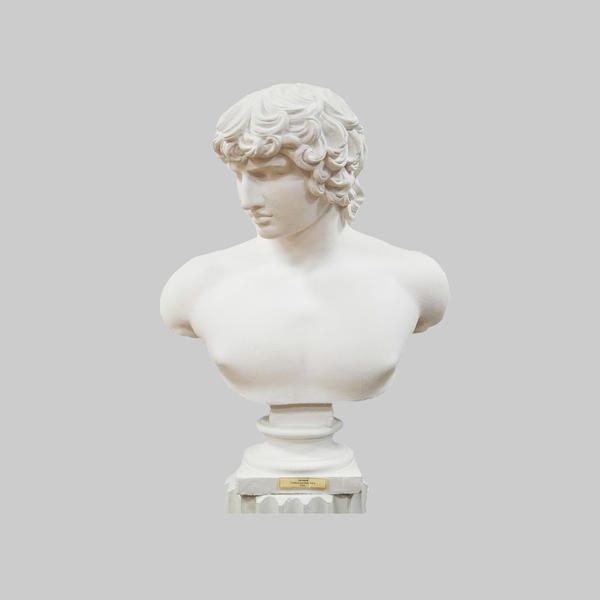The collection of the Arzamas museum contains the artwork created by the graduates of the A.V. Stupin School of Painting: pictures drawn from paintings, engravings and busts. Alexander Stupin started to create the resource base for the first provincial school during his stay in St. Petersburg. He sent boxes filled with books to Arzamas and bought prints, drawings, sketches and antiques — busts and statues copied from classical originals, such as the Gladiator, the Venus de’ Medici, the Faunus and the sculptured group Laocoőn and His Sons. All the works of art were kept in two special galleries of the school. When the school was closed in 1861, the sculptures were destroyed.
Bust of Antinous
Creation period
the 20th century
Dimensions
75х59х21 cm
Technique
plaster, casting, paint, painting
Exhibition
7
Open in app#1
Mass production
Bust of Antinous
#2
#3
The sculpture Bust of Antinous is one of the most common teaching aids used in the school. Life drawing was the main subject in the school.
#4
It not only helped to teach drawing but also favoured the development of the students. Life drawing also taught them to think and observe, awakened their interest in analysing the object and through it made them disposed to future studies. Drawing sculptures from life was aimed at making the students familiar with the external shape as well as with the notions behind the shape. It helped the students to train the eye and also to analyse their visual impressions. When sculptures were drawn from life, the process of gaining knowledge about the object went beyond simple watching and ensured transition from fragmentary perceptions to comprehensive ones.
Piotr Kornilov, an art historian and researcher studying the Arzamas School of Painting, lists the antique statues and busts donated to the Stupin school by the Academy of Painting ‘at the suggestion of Conference Secretary Vasily Ivanovich Grigorovich’. The list comprises the Borghese Warrior or Gladiator, the Meleager or Germanicus, the Anatomical Study by Houdon, the Venus de’ Medici and the colossal statue of Laocoőn. Italian humanists of the Renaissance were the first to call Greco-Roman culture antique (the Latin word ‘antiquus’ means ‘ancient’). They considered it to be the oldest one of those that they knew. It has still retained this attribute though more ancient civilisations have been discovered since then. Antique culture is used as a synonym for the classical era. This notion also accurately separates Greco-Roman culture from the cultural worlds of the Ancient Near East and Asia.
Piotr Kornilov, an art historian and researcher studying the Arzamas School of Painting, lists the antique statues and busts donated to the Stupin school by the Academy of Painting ‘at the suggestion of Conference Secretary Vasily Ivanovich Grigorovich’. The list comprises the Borghese Warrior or Gladiator, the Meleager or Germanicus, the Anatomical Study by Houdon, the Venus de’ Medici and the colossal statue of Laocoőn. Italian humanists of the Renaissance were the first to call Greco-Roman culture antique (the Latin word ‘antiquus’ means ‘ancient’). They considered it to be the oldest one of those that they knew. It has still retained this attribute though more ancient civilisations have been discovered since then. Antique culture is used as a synonym for the classical era. This notion also accurately separates Greco-Roman culture from the cultural worlds of the Ancient Near East and Asia.
#5
Municipal budget institution of culture History and Art Museum of the city of Arzamas, Nizhny Novgorod RegionКупшщт
read morehide
00:00
00:00
1x
Bust of Antinous
Creation period
the 20th century
Dimensions
75х59х21 cm
Technique
plaster, casting, paint, painting
Exhibition
7
Open in app
Share



